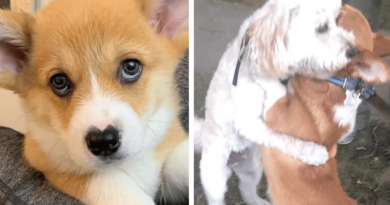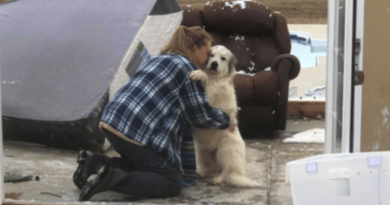What Are “Zoomies” and Why Do Dogs Exhibit This Behavior?
Most dog owners call the behavior “the zoomies.” The scientific name for these often-entertaining random energy bursts is “frenetic random activity period,” or FRAP, and some people refer to the behavior as “frapping.” Whatever you call it, it’s a completely normal dog behavior and, under most circumstances, it’s nothing to worry about.
Why do dogs get the zoomies?
We don’t know specially why dogs get the zoomies, but based on when they tend to happen, experts believe zoomies are an attempt to quickly release pent-up energy. All breeds of dogs can experience zoomies. The behavior is more common in younger dogs, but you’ll often see it in older dogs, too. (My 11-year-old Golden still gets the zoomies sometimes.)
When are dogs most likely to get the zoomies?
The most common times you can expect to see your dog get the zoomies are:
- During periods of high excitement – For example, when you get home from work and your dog is excited to see you.
- During play – When the activity is especially stimulating, play can boil over into an innocent case of the zoomies.
- Late in the evening – Some dogs are more prone to zoomies late at night. It’s as if they’re looking to burn some energy before an extended period of rest.
- After a bath – Likely to release pent-up energy from tolerating the bath. It’s also possible they enjoy the feeling of a breeze on their wet coat, or even that they’re trying to dry off. Who doesn’t love a good air-dry cycle?
Zoomies can also be a stress response
It’s not uncommon to see a dog get the zoomies during a training session when a dog becomes over-stimulated or finds some aspect of the training to be stressful. Your dog isn’t being naughty – he’s letting you know he’s struggling with some aspect of the situation. You might be tempted to address the issue by drilling stays or recalls in a training setting, but if your dog is stressed by the environment (too many distractions) or the work you’re asking him to do (repeating an exercise he finds challenging), drilling obedience behaviors isn’t likely to help. You’ll want to take a few steps back to look for – and identify – the root cause of the behavior.
Alternatively, you might experience what feels like goofy, completely unfocused, class clown behavior, often accompanied with excessive jumping and mouthiness in social situations. This behavior is often misunderstood as excessiveness friendliness, when in actuality, the dog likely so over-stimulated, she has little mental or physical control of her actions. This “fooling around” behavior can be just as much of a stress response as the better known, “flight, fight, or freeze” behaviors, and it’s your dog’s way of asking for help.
Are zoomies safe for dogs?
In general, “fun zoomies” are totally fine – and even endearing! Be mindful of the environment to help prevent accidental injury from slipping on slick floors or crashing into things, and protect yourself and other humans in the area by staying out of the way of your dog when he’s wildly zooming. Obedience cues often go unheard during a case of the zoomies, so it’s best to let frenetic behavior burn itself out before expecting your dog to respond correctly to known cues.
If your dog frequently gets the zoomies around the house, it could be a sign that she would benefit from more physical or mental stimulation through additional exercise, training, enrichment puzzles or other types of brain games.




